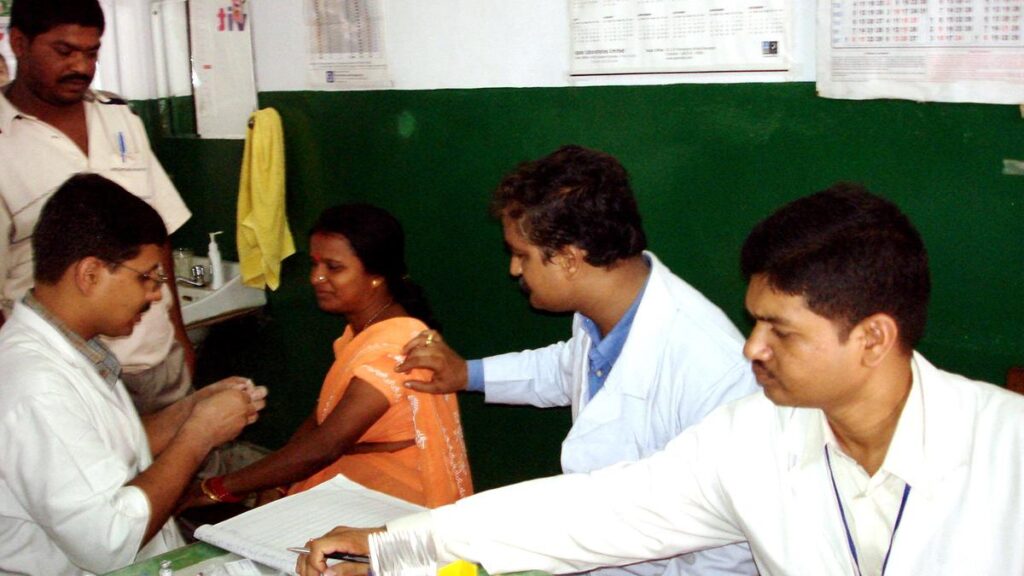A nationwide health facility survey has found significant gaps in the availability of anti-rabies vaccine (ARV) and rabies immunoglobulin (RIG) across India, especially in primary care centres and underserved regions such as the North-East. While secondary and tertiary care institutions have shown relatively better preparedness, the low availability in primary settings could undermine India’s goal of eliminating dog-mediated human rabies deaths by 2030.
Conducted across 60 districts in 15 states, the study assessed 467 public health facilities — including primary health centres (PHCs), community health centres (CHCs), district hospitals, and medical college hospitals. It found that while ARV was available in nearly 80% of public facilities, only about 20% stocked RIG — an essential component in treating category III animal bites.
“The availability of ARV in over 90% of secondary and tertiary care centres is an important milestone for India,” said a member of the study panel. “However, the persistent shortfall at the primary level and in specific geographies like the eastern and north-eastern states needs urgent intervention.”
The study noted that 93.8% of facilities with ARV had sufficient stock for the next 15 days. Yet, around a quarter of facilities reported stockouts in the past year. The availability of ARV was highest in the southern zone (93.2%) and lowest in the North-East (60%).
The survey also highlighted a shift toward cost-effective vaccine regimens. About 60% of public facilities have adopted the intradermal (ID) Thai Red Cross regimen — recommended for its dose-saving benefits. However, uptake of the ID regimen remains poor in the East and North-East.

Production bottlenecks and cost barriers
The availability of RIG, which is critical for treating severe bites, was markedly low — only 5.9% of primary facilities stocked it. In contrast, over half the tertiary institutions surveyed had RIG in stock. Experts attributed the low penetration to production and pricing issues.
“Equine Rabies Immunoglobulin (ERIG) has limited manufacturers, and supply disruptions are common. Meanwhile, Human RIG (HRIG) and monoclonal antibodies, though safer and effective, remain unaffordable for most public health facilities,” explained Dr. Raman Swathy Vaman, infectious disease epidemiologist and member of the research team.
Dr. Vaman added that procurement delays are often tied to slow disbursal of National Health Mission (NHM) funds. “Centralised procurement agencies like KMSCL and TNMSCL are effective, but vendor payments are delayed, disrupting the supply chain.”
He pointed to a promising model from Kerala’s Kasaragod district, where the District Hospital in Kanhangad uses ₹20 lakh annually — allocated by the District Panchayat — to procure monoclonal antibodies such as Rabishield, ensuring uninterrupted access to RIG for surrounding areas.
Training and infrastructure
The study found that while cold-chain infrastructure for storing rabies biologicals is largely adequate, training and supervision gaps persist. Only 45% of facilities had staff recently trained in administering rabies prophylaxis.
“Administering ID vaccines requires skill and RIG infiltration is even more technically demanding,” said Dr. Vaman. “Many cases are handled in busy outpatient or emergency departments, which increases the risk of improper administration.”
He suggested introducing structured training, regular audits, and use of visual aids like QR-code-accessible video guides. “Dedicated anti-rabies clinics, particularly in district hospitals, can improve service delivery and reduce errors.”
Need for context-driven policies
The survey team recommended initiating state-level operational research to identify bottlenecks in procurement, stock indenting, and fund flow. “We need to understand why the availability of rabies biologicals varies so sharply by region. Without this, we cannot design effective interventions,” a panel member said.
Dr. Vaman underscored the urgency of integrating rabies care into routine primary healthcare delivery. “We are dealing with an estimated 9.1 million animal bite cases annually. This is not a marginal problem. Most rabies deaths occur in young people and in rural areas. Yet the disease doesn’t get the attention it deserves in policy and budgeting.”
According to estimates from a parallel community survey, India records around 6,000 dog-mediated human rabies deaths annually. Experts stress that such figures should influence planning and forecasting of vaccine and immunoglobulin supply.
Towards zero deaths by 2030
The study aligns with the broader objectives of the National Rabies Control Programme (NRCP) and the WHO-backed “Zero by 30” initiative, which aims to eliminate dog-mediated human rabies deaths by 2030.
However, experts caution that progress will depend on equitable access, context-specific policy and consistent financing. The inclusion of Rabies Monoclonal Antibodies (RmAbs) in national guidelines is also being recommended for their scalability and cost-effectiveness.
“Timely and complete post-exposure prophylaxis (PEP) — including immediate wound washing, ARV, and RIG — is the only way to prevent rabies,” said Dr. Vaman. “Strengthening primary care and plugging regional gaps will be essential if we are serious about achieving elimination goals,”he said.
Published – July 01, 2025 07:15 pm IST

